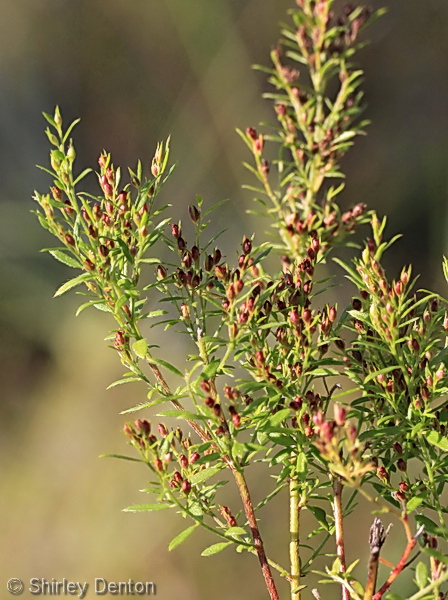Difference between revisions of "Lechea pulchella"
(→Ecology) |
HaleighJoM (talk | contribs) (→Ecology) |
||
| Line 48: | Line 48: | ||
<!--===Seed bank and germination===--> | <!--===Seed bank and germination===--> | ||
<!--===Fire ecology===--> <!--Fire tolerance, fire dependence, adaptive fire responses--> | <!--===Fire ecology===--> <!--Fire tolerance, fire dependence, adaptive fire responses--> | ||
| − | <!--===Pollination and | + | <!--===Pollination===--> |
| + | <!--===Herbivory and toxicology===--> | ||
<!--===Diseases and parasites===--> | <!--===Diseases and parasites===--> | ||
Revision as of 17:41, 14 July 2022
| Lechea pulchella | |
|---|---|

| |
| Photo by Shirley Denton (Copyrighted, use by photographer’s permission only), Nature Photography by Shirley Denton | |
| Scientific classification | |
| Kingdom: | Plantae |
| Division: | Magnoliophyta - Flowering plants |
| Class: | Magnoliopsida – Dicotyledons |
| Order: | Violales |
| Family: | Cistaceae |
| Genus: | Lechea |
| Species: | L. pulchella |
| Binomial name | |
| Lechea pulchella Raf. | |

| |
| Natural range of Lechea pulchella from USDA NRCS Plants Database. | |
Common name: Leggett's pinweed[1]
Contents
Taxonomic notes
Synonyms: Lechea leggettii Britton & Hollick; L. leggettii var. moniliformis (E.P. Bicknell) Hodgdon; L. leggettii Britton & Hollick var. ramosissima Hodgdon; L. leggettii var. typica.[1]
Varieties: Lechea pulchella Rafinesque var. moniliformis (E.P. Bicknell) Seymour; Lechea pulchella Rafinesque var. pulchella; Lechea pulchella Rafinesque var. ramosissima (Hodgdon) Sorrie & Weakley.[1]
Description
Recorded to be a frequent species where found.[2]
Distribution
Lechea pulchella var. moniliformis is common from the Coastal Plain to Nantucket Island, extending form Massachusetts to southern New Jersey, with disjunct populations along the Great Lakes.[1]
Lechea pulchella var. pulchella ranges from eastern Massachusetts to northeastern Ohio, then south to central Virginia.[1]
Lechea pulchella var. ramosissima is found from southeastern Virginia, south to northern Florida, and then west to eastern Louisiana. There are disjunct populations in Tennessee.[1]
Ecology
Habitat
This species can be found in dry, loamy sands in open flatwoods, bogs, pine-oak scrub, and bordering tidal marshes.[2] It has also been found growing in grassy areas near borrow pits and alongside trails.[2] Associated species include Longleaf pine and wiregrass.[2]
Phenology
This species flowers from June through August and fruits from August through October.[1]
Conservation, cultivation, and restoration
Cultural use
Photo Gallery
References and notes
- ↑ 1.0 1.1 1.2 1.3 1.4 1.5 1.6 Weakley, A.S. 2015. Flora of the southern and mid-atlantic states. Working Draft of 21 May 2015. University of North Carolina at Chapel Hill, Chapel Hill, North Carolina.
- ↑ 2.0 2.1 2.2 2.3 Florida State University Robert K. Godfrey Herbarium database. URL: http://herbarium.bio.fsu.edu. Last accessed: June 2014. Collectors: Loran C. Anderson, Robert K. Godfrey, and R. A. Norris. States and Counties: Florida: Gadsden, Leon, Liberty, and Wakulla. Georgia: Atkinson and Thomas.